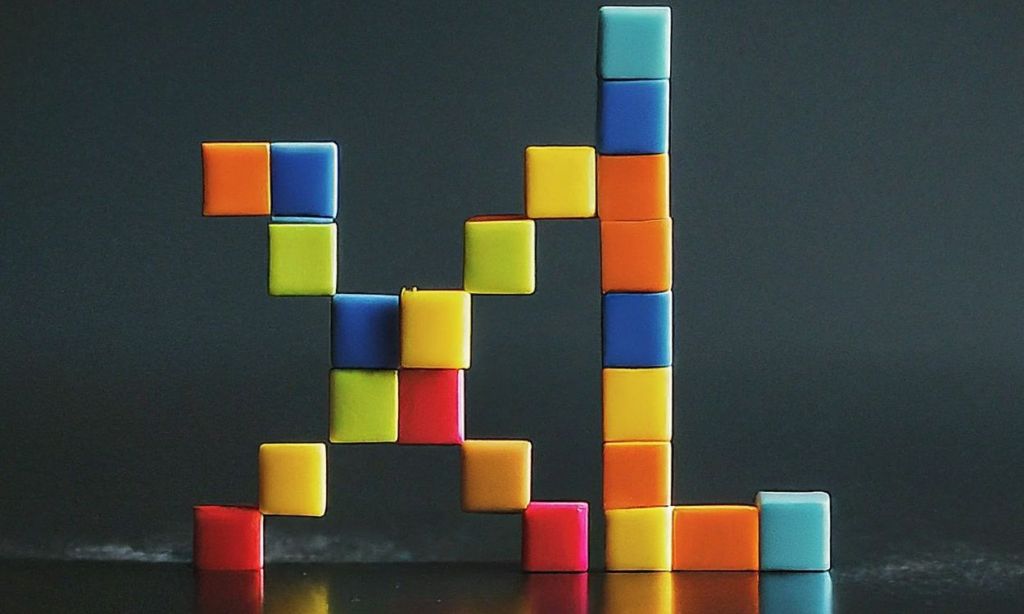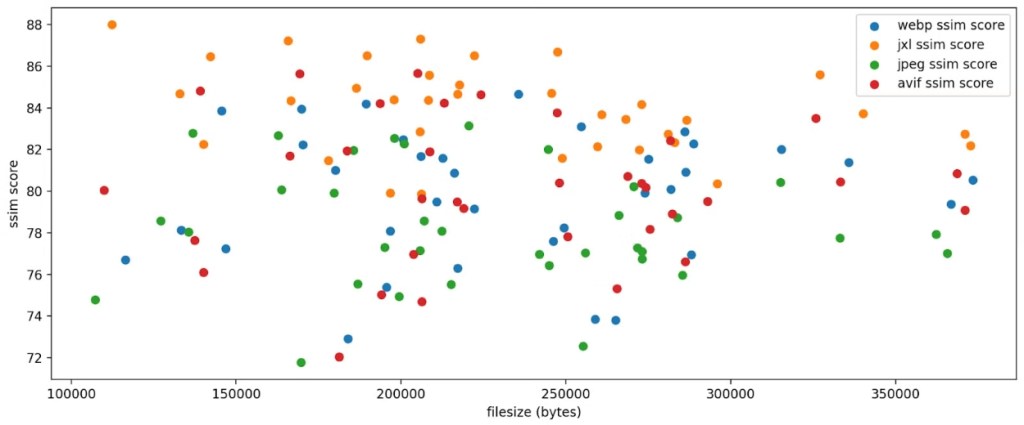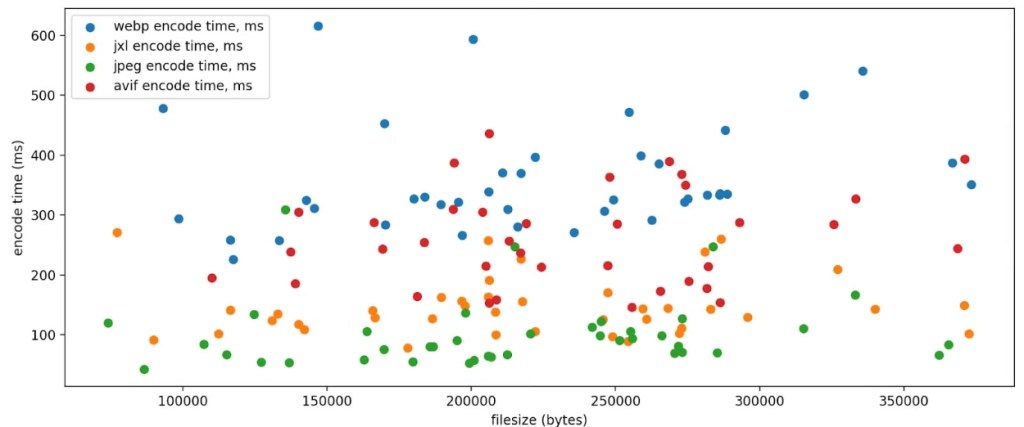The internet has always been a way to get information as quickly and efficiently as possible. So, there is always room for improvement in content and multimedia resources, such as images. Apart from the common formats like JPEG, PNG, WEBP, etc., there is no shortage of image formats. They are useful for encoding, storing, or even compressing digital images and each has its own USP. However, there is a new format called JPEG XL, which aims to be better in all areas. With the iPhone 16 Pro/Max being the first device to support this format, it could become a new standard very soon.
What is JPEG XL or JXL?
JPEG XL is an image compression format that improves on older image formats such as JPEG, PNG, and WebP. based on Google’s PIK and Cloudinary’s FUIF image formats. The main goal of its development is to improve compression efficiency while preserving image quality so that it can be used in everything from the Internet to professional photography.

JXL promises about 60% less file size Compared to a JPEG with the same visual quality, a lossless JPEG transcode is 20% smaller and 35% smaller than a PNG (50% smaller for HDR). These are pretty significant reductions. Here’s an example of some examples of JPEG XL compared to other file formats so you can see the difference for yourself. Oh, and JXL is backward compatible Also.
As mentioned earlier, JXL was created in 2018 by combining Google’s PIK and Cloudinary’s FUIF. Support for the format quickly made its way to Chrome and Firefox in 2022. But that’s later removed from Chrome because its developers felt it wasn’t worth it. At the time of writing, JPEG XL is supported on Safari and all the latest Apple devices, Linux, and creative software like GIMP, Krita, and Adobe Lightroom, among others.
What is the file extension for JPEG XL?
JPEG XL images use the file extension .jxl. As it is not widely used, your image viewer may not be able to display JXL images. Therefore, to see the quality differences between JXL and other formats, Darktable, Affinity, Photoshop, and Lightroom.
JPEG XL, JPEG and PNG
A typical JPEG XL image may maintain similar or better quality than JPEG but in 20-30% smaller file sizes. JPEG XL is also better at handling artifacts than JPEG, which typically uses heavy compression to reduce overall file size, resulting in artifacts and severe degradation in image quality.
JPEG XL supports both lossy and lossless compression compared to lossless PNG files, lossless JPEG XL images can sometimes be smaller but almost indistinguishable from PNG files.
Additionally, JPEG XL promotes transparency and has more depth of color (32-bit float vs. 16-bit). Combined with a smaller file size, expect PNGs to disappear soon, at least on the internet.
JXL even outperforms JPEGLI, an image format supported by Google, as it again preserves much more detail while maintaining a higher compression ratio.
JPEG XL and WebP
WebP seems to be the go-to image format for many editors on the internet and all the right reasons. Both offer excellent lossless compression without impacting image quality, but JXL outperforms WebP with higher compression and better color depth.
However, WebP is even a bit faster than JPEG XL in terms of encoding and decoding. Therefore, the web cannot completely switch to JXL in terms of loading time.
JXL vs other formats: benchmarks and tests
We need some examples to better understand the improvements that JXL brings over other formats. Fortunately, the folks at Cloudy And Quickly cover us with their benchmark results.
Below is a plotted image from ssimulacra2 of the compression achieved by JXL after converting PNG to other formats such as JPEG, AVIF, and WebP. The time (in ms) is on the Y axis, while the file size is on the X axis. As you can see, JXL almost always outperforms all formats, with WebP coming in second, followed by AVIF and JPEG.

Encoding times are a different story though, with WebP sometimes achieving much faster encoding times consistently. JXL and AVIF encoding times are almost similar, but on average, AVIF seems to be a bit ahead.

To differentiate JPEG XL from other image formats, here are some sample images from Cloudinary. WordPress can compress them even more, but you should be able to see the differences.
You can observe that the JPEG XL is much closer to a PNG image with almost no visual difference. The JPEG image is the worst with lots of visible color banding, followed by WebP, which is usable but still has some banding.
JPEG XL vs all major image formats
JXL support is still expanding and is not yet available on all platforms and applications. However, we expect that all major platforms will adopt it soon and your internet browsing experience will become more colorful and sharper with fewer artifacts and more details.
The image format is currently supported in many software like GIMP, Adobe Lightroom, Krita, FFmpeg, ImageMagick, Firefox (flag) and Edge (flag).
| Functionality | JPEG XL | PNG | JPG | WebP |
|---|---|---|---|---|
| Compression type | With and without loss | Lossless | With loss | With and without loss |
| Compression efficiency | The highest | High | AVERAGE | High |
| Image quality | Excellent | 100% (no loss of quality) | GOOD | Excellent |
| Color depth | 24-bit integer or 32-bit float | 8 bits and 16 bits | 8 bits | 8 bits and 12 bits |
| Transparency | Yes | Yes | No | Yes |
| File size | The smallest | AVERAGE | Little | Little |
Best Features of JXL
There is a lot to take away from the above comparisons, so let’s paint a clear picture of why JXL is so important when it comes to lossy and lossless compression compared to other formats.
- JXL achieves higher compression with 20-30% smaller file sizes.
- It supports lossy and lossless compression without significant impact on quality.
- JXL has a wider color gamut, so images compressed from, say, PNG to JPEG XL will appear more punchy than those from JPEG.
- JPEG XL is backward compatible with JPEG
- JXL has no patent restrictions, so any application can use it, promoting wider adoption.
JXL: Advantages and disadvantages
Although using JXL has many advantages over JPEG, AVIF, and WebP, it also has some disadvantages.
| Benefits | Disadvantages |
|---|---|
| Excellent compression without significant loss of quality | Extremely limited availability |
| Supports lossy and lossless formats | Lossless files may still be a bit large |
| Does not exhibit banding like JPEG files when compressed | Encode/decode times are not the fastest compared to the competition |
| Image colors are vibrant thanks to a wider color gamut | |
| Supports transparency and animations | |
| Free and unpatented |
If JPEG XL is so good, why isn’t it widely adopted yet?
It’s a good question, and the answer will teach you a thing or two about why having a monopoly is such a bad thing. In 2022, Chrome developers unexpectedly removed JPEG XL because they didn’t think it was the future. One of JPEG XL’s creators, Jon Sneyers, was told that the decision was made after some test results convinced the developers that it wasn’t worth it.
Jon pointed out some flaws in the Chrome team’s testing, but they were ignored. Since Chrome is THE most popular browser, a lack of support from Google slowed down the adoption of JPEG XL format. Until Apple added support for JPEG XL format on its devices.
In the Interoperability Project Made by browser giants like Apple and Google in 2024, JPEG XL received the highest share of votes with 646 reactions compared to its competitors. However, to the surprise of JPEG XL developers, their proposal was not selected. It is believed that it was Google who opposed the proposal.
Apple is looking to adopt JPEG XL across all of its devices. Since it has many advantages over traditional image formats, it could replace the JPEG image format on social media. While we can’t predict when JXL might become the standard, we expect its adoption to accelerate now that Apple has announced support for JXL across its software and devices.
JPEG XL offers better compression and retains as much detail and color depth, making it easy to differentiate high-quality JPEG XL images from lossy JPEG images. Additionally, since social media is all about color-enhanced images and JXL offers better color depth, it’s only a matter of time before platforms implement it.
What do you think about the JPEG XL image format? Let us know in the comments below.
Read More:-







